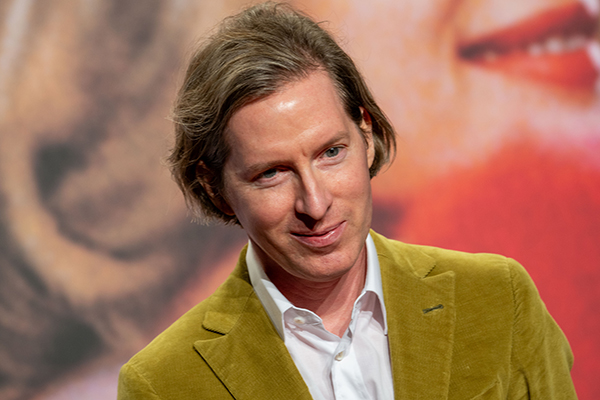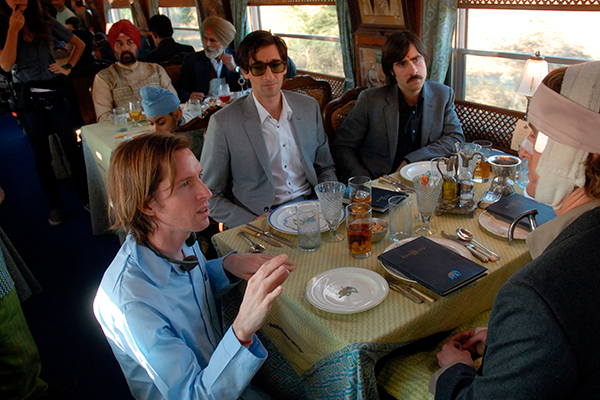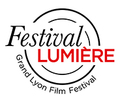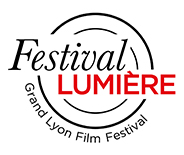Wes the Enchanter
Posted on 16.10.2023
The Texan filmmaker has established his singular, colourful aesthetic, transforming his cinema into a finely tuned world that he arranges as he pleases.
 © Loïc Benoit
© Loïc Benoit
The memory remains vivid: the last time I ran into Wes Anderson was in 2014, on the night between the fourth and fifth of February (to be as exacting as he is) in a sleeper. To get to Berlin, where The Grand Budapest Hotel was opening that year's festival, from Paris, now his main city of residence, the filmmaker, perhaps green but above all enamoured by nostalgia, had logically chosen the rail route. The situation was “100% Anderson”: we bid farewell to the gritty real world of the Gare du Nord to enter the unrealistic, cloistered setting of a night train (which no longer exists) with mysterious stops in the deserted countryside, alas without a dining car, much to the despair of the tweed-clad dandy, decidedly more “cosy British” than “Texan Yankee”, despite his true origins. Fortunately, Mr. Anderson had had the foresight to plan a picnic for the train compartment...
The scene could have been taken from one of his many movies featuring trains, except that instead of a peaceful night-time interior, we would have been treated to a nocturnal exterior plunge on rickety carriages, and a shot of a metal snake gliding through the darkness. Scale models would have added to the artifice, all filmed slightly accelerated to hit home the spectacular. “What I like most of all", commented the director, eying the landscape gradually fading to black, spinning by like a film reel, “is miniatures in movies. For example, the model trains that Hitchcock used in the 1930s allowed him to use stylistic devices that life-size objects would not have permitted”. The Lady Vanishes, a classic from the English period of Hitchcock (himself a great fan of trains), was the supposed reference point for The Grand Budapest Hotel.
Fifteen years earlier, this strange, stiff-haired cinephile, born in 1969, emerged from Houston, an apprentice filmmaker a world away from mainstream American cinema. His comedy Rushmore (1998) geared toward a teen audience, was unlike any other movie, and one vaguely tried to extract autobiographical threads from it since the gifted, Francophile protagonist played by Jason Schwartzman was seemingly unawares of his own weirdness. This was followed by family-oriented stories, whose picturesque nature added to the humour, even if deep down the parent-child relationships were complex and often melancholy… The characters of misunderstood children - or children who believed they were misunderstood - and their doubtful parents we chased after, are omnipresent in his works, from The Life Aquatic with Steve Zissou to Fantastic Mr. Fox, his first stop-motion film (based on the Roald Dahl book), not to mention The Darjeeling Limited and Asteroid City, his latest feature.
 © DR
© DR
Progressively, Wes Anderson's cinema has become more and more meticulous, somewhere between naive art and origami: "Indeed, the experience of Fantastic Mr. Fox changed me a lot," he confided to Libération. “Now, I think about cutting a film with actors in almost the same way as an animated film. Of course, the actors' movements are more unpredictable, of their own volition, but the setting in which they move is thought out down to the smallest detail, just like in an animated film. The set is constructed in relation to the intended sequence and often doesn’t exist outside the confines of the frame."
In The Wes Anderson Collection, a coffee-table book about the filmmaker, novelist Michael Chabon (The Mysteries of Pittsburgh) compares Anderson's style to the boxes of American surrealist sculptor Joseph Cornell, collections of scattered objects carefully framed (an exhibition of the latter’s work was held at the Lyon Fine Arts Museum in the winter of 2013-2014.) “I have to admit there's a certain kinship”, said the director. “My taste for miniatures probably comes from my childhood; I wanted to be an architect, so I drew buildings and built models. I also was fond of playing with Lego." Michael Chabon continues in the opus, “We would be wrong to think that a high degree of artificiality is incompatible with real emotion.” He is right: contrary to popular belief, Wes Anderson's skilful constructions produce a singular form of joyful poignancy, just like the tale he'll be introducing at the Lumière film festival, The Wonderful Story of Henry Sugar. It is a rare opportunity to see the Netflix-produced gem on the big screen. You'd almost swear that as his films become thinner - even his live-action films seem to be moving further and further towards 2D - Wes Anderson's œuvre is gaining in depth. ‘Tis the paradox of a magician filmmaker…
Aurélien Ferenczi
AN EVENING WITH WES ANDERSON
Auditorium of Lyon - Mon. 16 at 7:30pm
A conversation and screenings
The Wonderful Story of Henry Sugar by Wes Anderson (40min)
The Grand Budapest Hotel by Wes Anderson (1h39)
SCREENINGS OF THE DAY introduced by Wes Anderson:
Isle of Dogs by Wes Anderson (2018, 1h41)
Pathé Bellecour - Mon. 16 at 11.15am
Rushmore by Wes Anderson (1998, 1h34)
Pathé Bellecour - Mon. 16 at 2pm
Pather Panchali by Satyajit Ray (1955, 2h05)
Institut Lumière (Hangar) - Mon. 16 at 2.45pm

